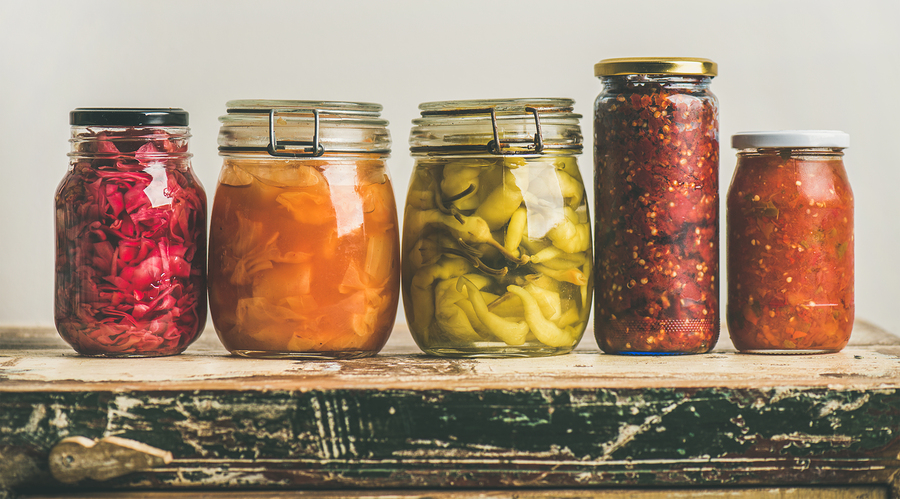Did you know that records of fermented cabbage date back 6,000 years ago in China? Or that in 50 BCE Rome, sauerkraut was said to aid in digestion (among other things)? There are even references in the Bible about fermented food. The process of fermentation might have been developed in order to preserve food through harsh winters but it does so much more!
“…it increases vitamin content by making nutrients more digestible and bio-available, provides live, active enzymes and promotes beneficial gut flora. Virtually every country has created their own variation on the fermentation process, knowing its magic.”1
And because of this, many cuisines from all over the world include at least one fermented food or drink with each meal. (Can you imagine how healthy our guts might be if American’s did that?) For instance, in Japan, most of their meals will contain soy sauce, miso soup, dashi or pickled vegetables — all fermented foods. And full of not only minerals, vitamins, and electrolytes but amazing flavor.
“Flavor is a great side effect, but the health benefits of these foods are even more amazing. This power comes partly from lactic acid. Salt is mixed with the food, which preserves it until lactic acid and its beneficial bacteria take over. Lactic acid assists both the breakdown of food and the assimilation of nutrients. It normalizes stomach acid, activates the pancreas (for insulin regulation) and aids in the metabolism of fats. Lactobacilli is the main probiotic in this type of lacto-fermentation, fighting off all dangerous bacteria and giving you that healthy gut flora.”2
RELATED STORY:
But take note: modern-day canning (patented in 1810) is a different process than traditional fermentation and can- as it involves high heat- kill the beneficial enzymes and probiotics. So, if you’re up for it, maybe check out one of the videos above and give the older process a go. Your body will thank you for doing so.
Thanks to Dope Magazine for the following two recipes:
Sauerkraut
-1 medium cabbage, shredded
-1 tbsp sea salt (pink Himalayan or another natural salt)
-1 tsp to 1 tbsp caraway seeds (optional)
-4 tbsp whey (if not available, add an additional 1 tbsp salt)
-Quart-sized mason jar
-Optional add ins: beets, carrots, garlic, ginger, onions, apples — all add amazing flavor!
Mix all ingredients in a bowl with your hands to help all the juices release from the cabbage. Press into a quart-sized mason jar, making sure to press out all air bubbles. If the liquid doesn’t come up to the top, add water so it’s completely submerged. Add a weight to keep the cabbage down or check on it a few times a day and submerge the cabbage with the back of a spoon, pressing air and gas out (it may become bubbly — that’s a good sign!). Keep covered at room temperature three to seven days, tasting every day, then transfer to the refrigerator when you like the taste.
RELATED STORY:
Kvass
-2-3 medium organic beets diced into 1-inch cubes
-1 tsp sea salt
-2-3 tbsp whey (see below)
-Quart-sized mason jar
Scrub the beets so no dirt remains. Trim the tops, bottoms and any hairy parts, but no need to peel. Fill a quart-sized mason jar halfway with beet cubes, then add whey and salt. Fill with filtered water, cover with lid and shake to combine. Let sit in room temperature for four to seven days and transfer to the fridge when it tastes good!
SOURCE:












